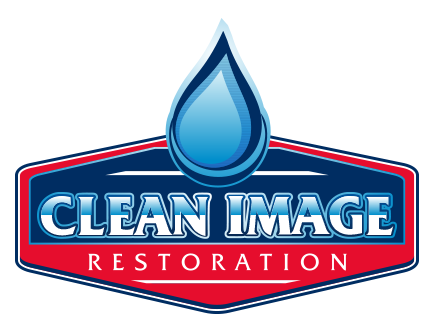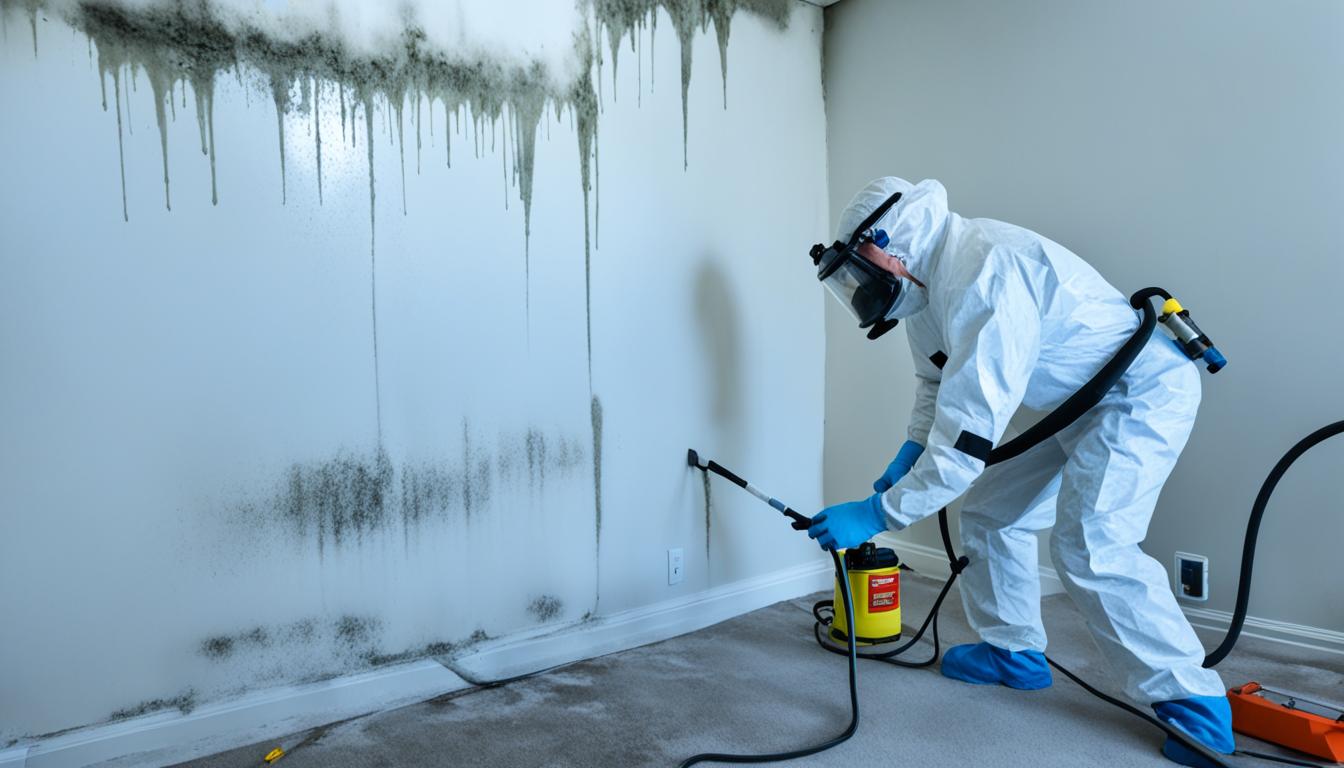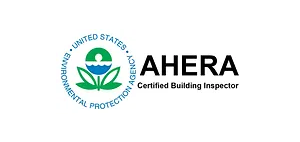Discover the truth about mold removal: Is it a task you can tackle on your own, or should you leave it to the professionals?
Dealing with mold in your home is a serious matter that requires careful consideration. Mold infestations can pose risks to both your health and property, making it crucial to address the problem promptly and effectively. But when it comes to getting rid of mold, should you call a professional or attempt to handle it yourself?
In this article, we will explore the pros and cons of DIY mold removal and professional mold remediation services. We will discuss the risks associated with mold infestation, the factors to consider when deciding whether to hire a professional, and the benefits of professional mold removal services. By examining the different options, you will be able to make an informed decision about the best approach for your situation.
Key Takeaways:
- Understanding the risks associated with mold infestation is crucial for making an informed decision.
- Identifying mold in your living spaces is essential for effective removal.
- There are different types of mold, each with its own characteristics and potential health impacts.
- Weighing the pros and cons of DIY mold removal can help determine the best approach.
- Professional mold remediation services offer specialized expertise and equipment.
Understanding Mold Infestation and Its Risks
Mold infestation occurs when excess moisture and suitable conditions allow mold spores to grow and multiply. It can be found in various areas of the home, including bathrooms, basements, and areas with water damage. To better assess the need for professional mold removal, it is crucial to understand how mold spreads, the common causes of infestation, and the potential health risks associated with exposure to mold.
Mold spores are present in the air both indoors and outdoors. When they land on wet surfaces, they can start to grow and form mold colonies. Excessive humidity, water leaks, and condensation are common factors that contribute to mold infestation. Once established, mold can spread rapidly, releasing more spores into the air and further exacerbating the issue.
Exposure to mold can have adverse effects on health, particularly for those with allergies, asthma, or weakened immune systems. Mold spores can trigger allergic reactions, respiratory issues, and sinus infections. Prolonged exposure to mold can lead to more severe health problems, such as chronic bronchitis and fungal infections.
Dealing with mold infestation requires prompt action to mitigate its risks and prevent further damage. In the next sections, we will explore the signs of mold growth, different types of mold and their impact on health, as well as the pros and cons of DIY mold removal versus hiring professional services. Armed with this knowledge, you will be better equipped to make an informed decision regarding the appropriate course of action for mold removal in your living spaces.
Identifying Mold in Your Living Spaces
Identifying mold in your home is crucial for effective removal. By recognizing the signs of mold growth and understanding where it commonly occurs, you can take prompt action to address the issue. Here are some key points to help you identify mold in your living spaces:
- Musty Odors: One of the most common signs of mold is a strong, earthy smell. If you notice a persistent musty odor, especially in certain areas of your home, it could indicate the presence of mold.
- Discoloration: Mold often appears as dark or discolored patches on surfaces. Look for any unusual spots or stains on walls, ceilings, floors, or furniture. Pay close attention to areas with moisture or water damage, as they are more prone to mold growth.
- Visible Mold Growth: If you see visible mold growth in your home, it is a clear indication of an ongoing mold problem. Mold can appear in various colors and textures, ranging from black or green to fuzzy or slimy in texture.
- Physical Symptoms: Mold exposure can cause a range of physical symptoms, including allergies, respiratory issues, headaches, and skin irritation. If you or your family members experience such symptoms that seem to improve when you leave your home, mold could be the culprit.
- Common Mold Locations: Mold thrives in damp environments, so it is commonly found in areas with moisture or water damage. Some common locations for mold growth include bathrooms, basements, kitchens, attics, and areas around plumbing fixtures.
It is important to note that mold can also grow in hidden areas, such as behind walls or under carpets. If you suspect mold but cannot visually confirm its presence, it is recommended to consult a professional for further investigation.
By being vigilant and proactive in identifying mold, you can take the necessary steps to address the issue promptly and protect the health and safety of your household.
Different Types of Mold and Their Impact
When it comes to mold infestation in homes, there are various types of mold that can be found, each with its own characteristics and potential health impacts. By understanding the different mold types and their potential risks, homeowners can determine the severity of the infestation and decide whether professional assistance is necessary.
Common types of household mold include black mold and white mold. Black mold, scientifically known as Stachybotrys chartarum, is a greenish-black mold that thrives in damp environments. It is known for its toxic properties and potential health effects. Exposure to black mold can lead to respiratory issues, allergies, and other health complications.
White mold, on the other hand, is a powdery or fluffy-looking mold commonly found in areas with high humidity. It can be found on various surfaces, such as walls, wood, and fabrics. While white mold is less commonly associated with severe health effects compared to black mold, prolonged exposure can still cause respiratory problems and allergic reactions.
Other types of mold that can be found in households include green mold, gray mold, and yellow mold. While these molds may not be as well-known as black or white mold, they can still pose health risks, especially to individuals with respiratory conditions or compromised immune systems.
It is important to note that the impact of mold on health can vary depending on factors such as the individual’s sensitivity, the duration of exposure, and the extent of the mold infestation. Therefore, it is crucial to address mold issues promptly and seek professional assistance when necessary to ensure the safety and well-being of occupants.
DIY Mold Removal: Pros and Cons
Many homeowners opt for DIY mold removal as a cost-saving option. There are several potential benefits to tackling mold removal yourself. Firstly, it can be a more economical choice, as hiring a professional mold removal service can be expensive. Additionally, by taking immediate action, you can address the mold infestation promptly and minimize further damage to your property.
However, there are important considerations to keep in mind when attempting DIY mold removal. One of the major risks is improper removal, which can result in the spread of mold spores and exacerbate the problem. Without the necessary expertise and equipment, it can be challenging to effectively eliminate the mold infestation.
Furthermore, there are potential health hazards associated with DIY mold removal. Mold spores can cause respiratory issues and allergic reactions, especially in individuals with pre-existing health conditions. It is essential to take proper safety precautions, such as wearing protective gear and ensuring proper ventilation, to minimize the risk of exposure.
By weighing the pros and cons, you can make an informed decision about whether to attempt DIY mold removal. If the mold infestation is minor, limited to a small area, and you have the necessary knowledge and precautions, DIY removal may be a viable option. However, for larger infestations, extensive damage, or if you are uncertain about the proper removal techniques, it is recommended to seek professional assistance for effective and safe mold removal.
Should you call a professional to get rid of mold?
Deciding whether to call a professional for mold removal requires careful consideration. There are several factors that you should take into account before making this decision.
The first factor to consider is the extent of the mold infestation. If you have a small area of visible mold that can be easily cleaned and removed, you may be able to handle it yourself. However, if the mold has spread to multiple areas or is extensive, it is recommended to seek professional mold removal services. They have the expertise and equipment to effectively eliminate mold in large-scale infestations.
Your own expertise is another important factor to consider. If you have experience with mold removal and are confident in your ability to safely and effectively eliminate mold, DIY removal may be an option. However, if you are unsure of the proper techniques or lack the necessary knowledge, it is best to leave it to the professionals. Incorrect removal methods can actually worsen the problem and cause the mold to spread further.
The potential health risks associated with mold exposure should also be taken into account. Some types of mold, such as black mold, can release toxic spores that can cause severe health problems, especially in individuals with respiratory conditions or weakened immune systems. If you suspect the presence of toxic mold or if you or your family members are experiencing unexplained health symptoms, it is crucial to call a professional for mold removal to ensure the safety of your living environment.
In conclusion, while small and manageable mold infestations can sometimes be addressed with DIY methods, there are certain situations where it is necessary to call a professional for mold removal. Factors such as the extent of the infestation, your own expertise, and the potential health risks should all be carefully evaluated when making this decision. It is always better to be safe than sorry when it comes to mold removal to ensure the health and well-being of your home and family.
Professional Mold Remediation Services Explained
When it comes to effectively removing mold from your home, professional mold remediation services offer specialized expertise and equipment. Hiring professionals for mold removal ensures a thorough and efficient process. Let’s explore the typical steps involved in professional mold remediation and the benefits it provides.
Inspection: Professional mold remediation begins with a comprehensive inspection of your property. Trained experts examine every corner to identify the extent of the mold infestation and determine the appropriate course of action.
Containment: Containing the mold is crucial to prevent its spread during the removal process. Professionals use advanced techniques and physical barriers to isolate the affected areas, preventing cross-contamination to other parts of your home.
Removal: Professional mold remediation involves the safe and effective removal of mold. Trained technicians use state-of-the-art equipment and industry-approved techniques to eliminate mold growth from surfaces, including walls, ceilings, and floors.
Prevention of Future Growth: One of the significant advantages of professional mold removal services is their ability to prevent future mold growth. Professionals address the underlying causes of mold infestation, such as moisture issues, to ensure that mold does not return.
By opting for professional mold remediation, you can enjoy several benefits. Firstly, professionals provide thorough and comprehensive mold removal, ensuring that every trace of mold is eliminated from your home. This not only improves the aesthetic appeal of your living spaces but also minimizes the health risks associated with mold exposure.
Furthermore, professional mold remediation offers peace of mind. You can trust the expertise and experience of trained professionals to handle the removal process safely and efficiently. They follow industry standards and best practices, ensuring that the mold is removed in a way that protects both your property and health.
In conclusion, professional mold remediation services provide the expertise, equipment, and comprehensive approach necessary to effectively remove mold from your home. By hiring professionals, you can benefit from a thorough inspection, proper containment, safe removal, and prevention of future mold growth. This ensures a clean, healthy environment for you and your family, free from the dangers of mold infestation.
The Cost of Professional Mold Removal Versus DIY
When it comes to mold removal, cost is a significant factor to consider in determining the best approach for your situation. Understanding the factors that influence the cost of professional mold removal and comparing it to the expenses associated with DIY methods can help you make an informed decision.
Professional mold removal costs can vary depending on several factors:
- The size of the affected area: Larger areas requiring more extensive work may incur higher costs.
- The extent of damage: The severity of the mold infestation and the level of damage it has caused can impact the price of professional removal.
- The necessary equipment and materials: Professional mold remediators have access to specialized tools, protective gear, and effective cleaning agents, which can contribute to the overall cost.
On the other hand, DIY mold removal offers the potential for cost savings, but it’s essential to consider the expenses that may arise:
- Mistakes and ineffective methods: Incorrect removal techniques or insufficient equipment can lead to recurring mold problems, resulting in additional expenses.
- Purchasing equipment and materials: DIY mold removal may require the purchase or rental of protective gear, cleaning products, and possibly even specialized equipment, which can add up.
- Health risks: Mold removal can release harmful spores into the air, posing health hazards. If proper precautions are not taken, it may lead to additional medical costs.
While DIY mold removal may seem cost-effective initially, the value of professional expertise and the potential risks of incorrect removal techniques should not be overlooked. Hiring professionals ensures the job is done thoroughly and reduces the likelihood of future mold issues.
To determine the most cost-effective and efficient option for mold removal, evaluate the size and severity of the infestation, consider the necessary equipment and materials, and assess your own experience and capabilities. In some cases, investing in professional mold removal may provide long-term benefits and peace of mind.
Choosing the Right Mold Removal Service
Selecting the right mold removal service is crucial when dealing with a mold infestation. Hiring a professional mold removal company ensures a successful and safe mold removal process. To make an informed decision, it is important to ask the right questions and consider certain factors. Here are some key questions to ask when choosing a mold removal professional:
- Do they have the necessary certifications and licenses? It’s important to work with a mold removal company that has the proper certifications and licenses. This ensures that they have the knowledge and expertise to handle mold remediation safely and effectively.
- What is their level of experience? Ask about the company’s experience in dealing with mold removal. Look for a company with a proven track record of successfully treating mold infestations.
- Do they offer warranties or guarantees? A reputable mold removal company should provide warranties or guarantees for their services. This ensures that they stand behind their work and are committed to customer satisfaction.
In addition to asking these questions, it’s essential to consider certain qualities and credentials when choosing a mold removal service:
- Reputation: Look for a company with a good reputation in the industry. Read reviews and testimonials from previous customers to get an idea of their past performance.
- Licensing: Ensure that the mold removal company is properly licensed to operate in your area. This ensures that they meet the necessary requirements and adhere to industry standards.
- Insurance: Verify that the company has insurance coverage. This protects you in case of any accidents or damages that may occur during the mold removal process.
By considering these factors and asking the right questions, you can confidently choose a reliable mold removal service to address your mold infestation.
Conclusion
In conclusion, mold removal is a task that should be approached with caution and thoroughness. Throughout this article, we have explored the various factors to consider when deciding whether to call a professional or attempt DIY mold removal.
Safety is of utmost importance when dealing with mold, as exposure to mold spores can have adverse health effects. Professional mold removal services offer specialized expertise and equipment to ensure comprehensive removal and reduce health risks. However, DIY mold removal may be a viable option for small-scale, visible mold growth if proper precautions and techniques are followed.
It is crucial to assess the extent of the mold infestation, evaluate personal expertise, and weigh the potential risks and benefits before making a decision. While professional mold remediation services may come at a higher cost, they provide peace of mind and efficient removal. On the other hand, DIY mold removal can be cost-effective but requires careful attention to detail and adherence to safety guidelines.
In summary, the decision to call a professional or attempt DIY mold removal depends on the specific circumstances and individual capabilities. It is recommended to consult with a professional if facing extensive mold infestations, dealing with hidden mold, or encountering toxic mold. By prioritizing safety, efficiency, and thoroughness, you can effectively address mold issues and maintain a healthy living environment.
FAQ
Should I call a professional to get rid of mold?
It is advisable to call a professional for mold removal, especially if you have a severe mold infestation or are dealing with toxic mold. Professionals have the expertise, equipment, and knowledge to effectively remove mold and minimize health risks.
What are the risks associated with mold infestation?
Mold infestation can pose various risks to your health, including respiratory issues, allergies, infections, and exacerbation of existing conditions. Prolonged exposure to mold can lead to more serious health complications, making it important to address mold infestations promptly.
How can I identify mold in my living spaces?
There are several signs that indicate the presence of mold, such as a musty odor, visible mold growth, discoloration on walls or ceilings, and physical symptoms like coughing or sneezing. If you notice any of these signs, it is recommended to further investigate for mold.
What are the different types of mold and their impacts?
Mold can come in various types, with common ones including black mold and white mold. Each type has different characteristics and potential health impacts. Black mold, for example, is known for its toxicity and can cause severe health problems if not properly treated.
What are the pros and cons of DIY mold removal?
DIY mold removal can be a cost-saving option, allowing for immediate action. However, it is important to consider the risks involved, such as improper removal techniques, lack of proper equipment, and potential health hazards.
When should I call a professional for mold removal?
It is recommended to call a professional for mold removal when you have a large-scale infestation, hidden mold, or when dealing with toxic mold. Additionally, if you are uncertain about your own expertise or if the mold has caused significant damage, professional assistance is essential.
What does professional mold remediation entail?
Professional mold remediation typically involves a thorough process, including inspection, containment, removal, and prevention of future growth. Professionals have the necessary expertise and equipment to ensure comprehensive mold removal and minimize the risk of re-infestation.
How does the cost of professional mold removal compare to DIY methods?
The cost of professional mold removal depends on factors such as the size of the affected area and the extent of damage. While DIY methods may seem more affordable initially, mistakes or inadequate removal can lead to additional expenses. Professional services offer value in terms of expertise, thoroughness, and reduced risks.
How do I choose the right mold removal service?
When selecting a mold removal service, it is important to ask questions about their certifications, experience, and warranties. Additionally, consider the company’s reputation, proper licensing, and insurance coverage to ensure they are reliable and trustworthy.
What is the conclusion on mold removal?
Mold removal should be taken seriously to ensure the safety and effectiveness of the process. Depending on the severity of the mold infestation, your expertise, and the associated risks, it may be necessary to call a professional for mold removal. Consider the factors discussed to make an informed decision on the best approach for your situation.






